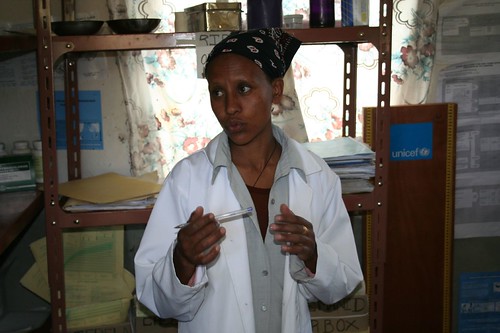
It would be interesting to know what percentage of Americans have heard of obstetric fistula. Actually, I guessing it would be next to none. Not that anyone would spend the money to conduct the poll.
Obstetric fistula is an injury suffered from prolonged labor in childbirth that is avoided or repaired where babies are delivered in hospitals. In parts of the world where hospitals are few and far between in remote areas, it is a different story. And a heartbreaking one for an estimated 2 million young women and girls told touchingly by filmmaker Mary Olive Smith in the documentary A Walk to Beautiful. The film's website says about obstetric fistula :
Short of death, the most devastating effect of neglected childbirth is obstetric fistula, a hole that forms between the vagina and the bladder or rectum during prolonged, obstructed labor. This horrific injury leaves victims incontinent. Some develop nerve damage in the feet and legs.The risk of obstetric fistula is much higher for young girls who often have prolonged labor as their babies are simply too big and a safe Cesarean section is not available. If the physical injury wasn't enough, the social and economic consequences for the victims are life-shattering. The incontinence and associated smell often leads to ostracization by family and social networks, leading the woman and sometimes her children to be shunned.
We at the Woodrow Wilson Center in Washington were lucky enough to host Mary Olive, a former colleague, last week for a screening and discussion of this film that tells the story of five Ethiopian women and their difficult roads to treatment at the famous Addis Ababa Fistula Hospital. It gives outsiders a glimpse of this terribly unfair malady and its devastating impacts while providing hope and inspiration from these particular women and girls who overcame tremendous hurdles to even reach Addis for care.
I don't know if they have obstetric fistula records at the small room that serves as the health facility at Berga wetland project. The two young women with one year of health training (see picture) who work there do deliver babies and they record deliveries on handwritten charts on the wall. I will try to find out more about their particular experiences and how far away a hospital is for example. In the meantime, find a way to watch the award-winning film A Walk to Beautiful.

2 comments:
My God! As if labor in any condition isn't hard enough? Each and every day we are thankful for having the good fortune to be born where and when we were. Why us? Why were we so lucky? I'm not close to being intelligent enough to carry that kind of existential conversation but again, we thank God.
Where can we see it?
It is an incredible movie. You can find it by going to YouTube and putting in "Walk to Beautiful". What amazes me about the people there in Ethiopia is their grace in adversity. They find reasons to smile no matter what. Or perhaps it is better said that they smile no matter what. Gorgeous and strong.
There is a good bit going on right here in th US to help raise awareness (for starters) aboutt fistulas. The (Ethiopian)Orthodox Church in NYC has a group devoted to just that.
Post a Comment